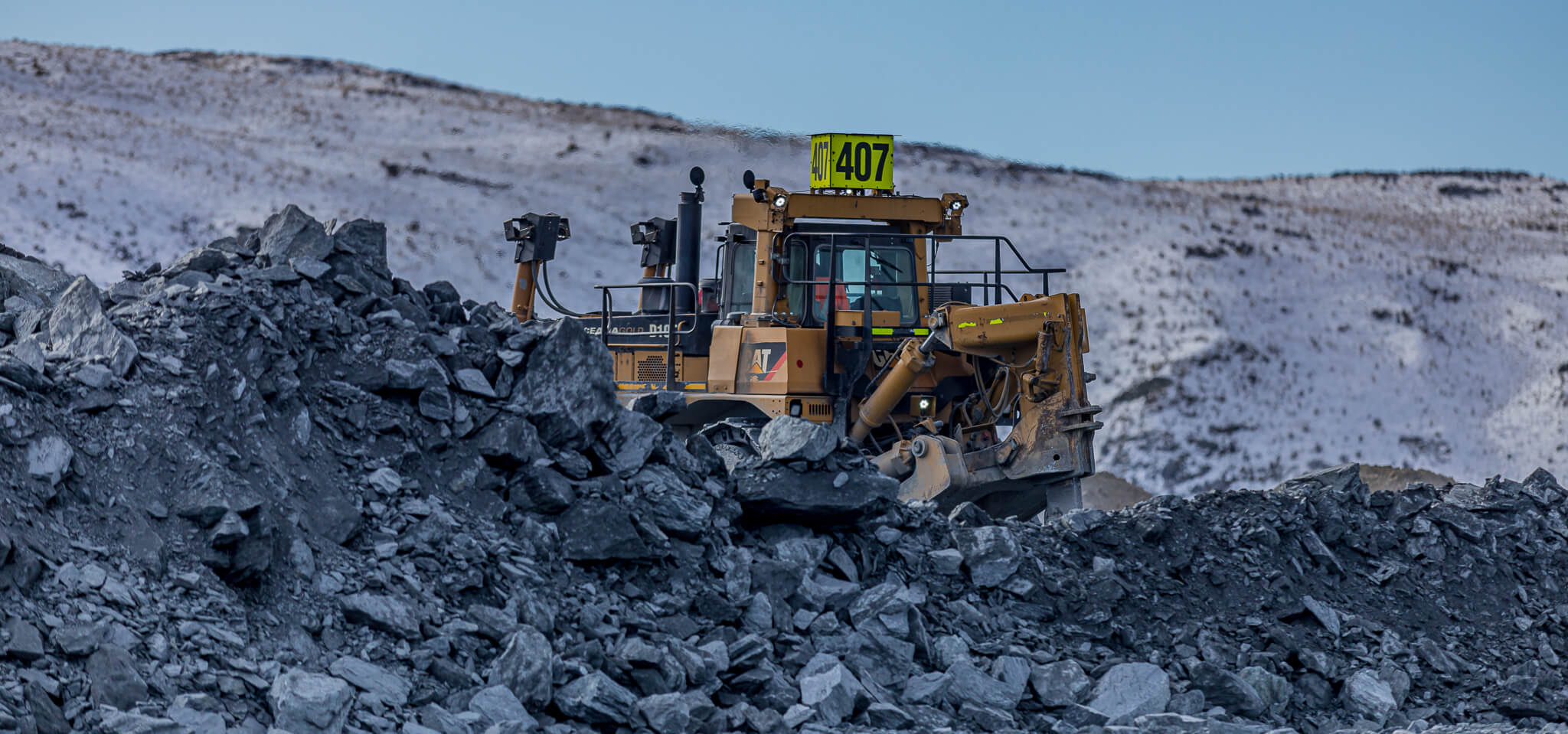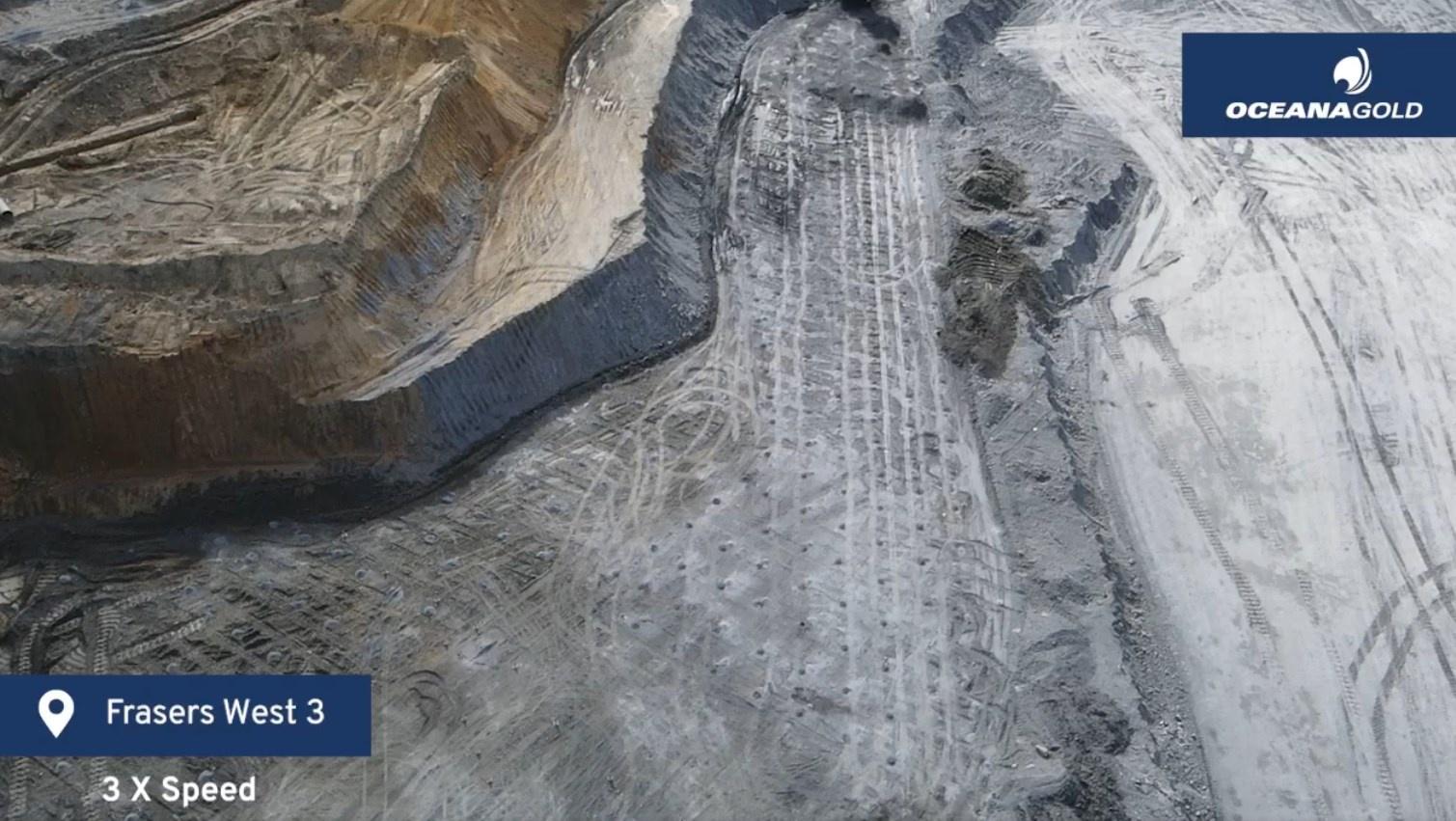
Cycle
An open pit mine is established through a cycle of exploration, mining and rehabilitation. It continues to repeat these stages as the process moves around the designated pit, often occurring at the same time in different areas.
After receiving the plan for extraction from the Exploration team, and completing a full environmental assessment, mining can begin.
Preparing the Area
The proposed area is prepared by removing vegetation and layers of topsoil to reach bedrock. These are moved to previously mined or storage areas for use in the rehabilitation stage of the mining cycle.

Drilling and Blasting
Drilling is used to define ore (rock containing gold) and waste (rock which does not contain economic quantities of gold). Drill rigs drill holes in a predetermined pattern that are then filled with explosives. The explosives are electronically timed to blast in stages and causes the rock to break up, making it easier to transport.
Removing Waste Material
To reach the ore body (rock containing gold) layers of waste are blasted and then removed by excavators and haul trucks. Waste rock is transported to a waste rock stack and is used to rehabilitate or used to stabilise and fill previously mined areas.

Rehabilitating Mined Area
After mining has been completed in an area, we begin to progressively rehabilitate it. Progressive rehabilitation offers a number of advantages including improving the visual appearance of the disturbed areas, establishing a cover to provide erosion control, improving runoff water quality by minimising silt loads, and dust control.
Learn more about our rehabilitation projects here.





